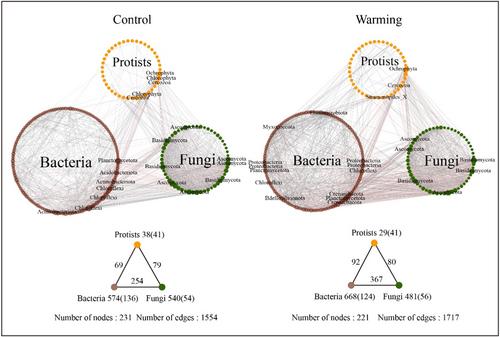Protists are unicellular eukaryotes including important predators, parasites and phototrophs, and play pivotal roles in organic matter decomposition, biogeochemical nutrient cycling and various ecosystem functions. Unravelling the impact of climate warming on soil protists is paramount in predicting how these microorganisms will continue to provide essential ecosystem services in the face of changing climatic conditions.
We examined the effects of 5-year simulated climate warming scenario, with temperatures increased by 4°C above ambient levels, on the diversity and community composition of soil protists, as well as their interactions with other microorganisms in both natural and plantation forest ecosystems during three seasons: summer, autumn and winter.
We found a season-dependent response of protists to climate warming, with a significant decrease in protist diversity during winter in natural forests. Furthermore, we identified significant alterations in the community compositions of protists during summer in both natural and plantation forests, as well as during winter in both forest types, under warming. Our analysis pinpointed specific functional protist taxa, such as consumers, parasites and phototrophs, which exhibited significant shifts in their relative abundances under warming. Additionally, we found that warming facilitated trophic interactions between protists and bacteria, while also strengthening interactions between bacterial and fungal communities. Warming could induce direct modifications in protist community compositions or indirectly affect them by modifying bacterial and fungal communities, as revealed by structural equation modelling.
These findings demonstrate the substantial impact of warming on the taxonomic and functional compositions of protists in forest ecosystems, with the magnitude of these effects varying across seasons. Our study implicates that ongoing climate warming could have significant consequences for the profiles of soil protists, as well as their trophic interactions with bacteria and fungi, highlighting the importance of considering these effects for the sustainable provision of ecosystem functions.


